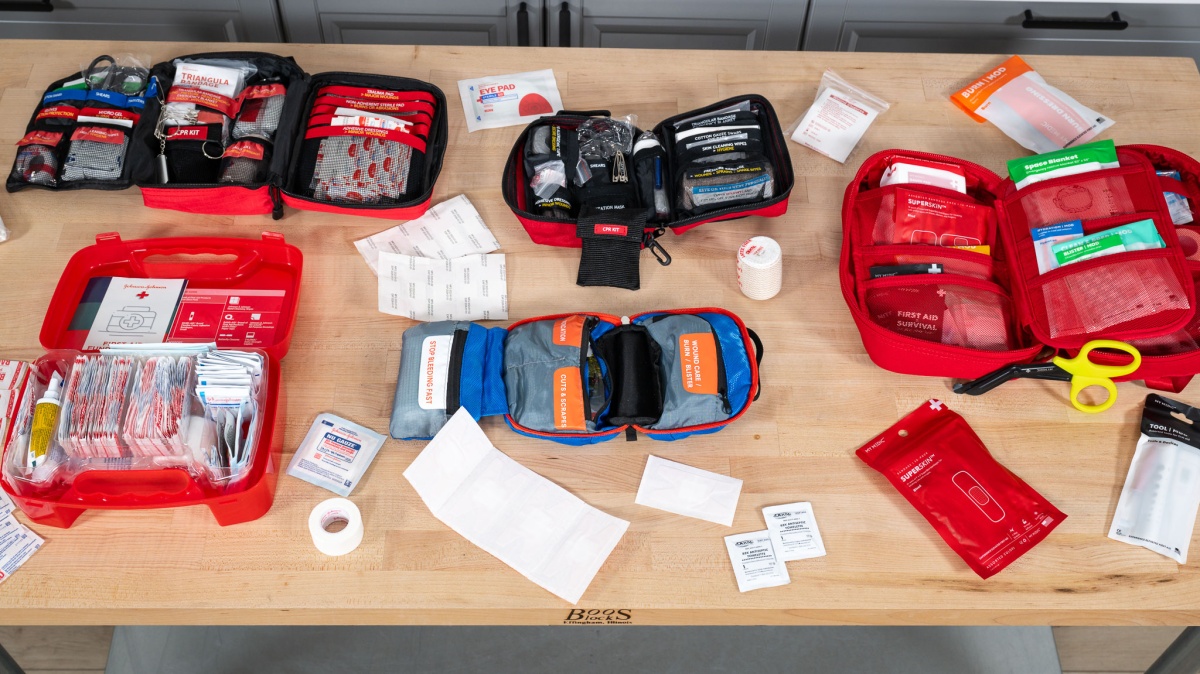In today’s unpredictable world, the idea of being prepared for an emergency is more important than ever. Whether it’s a natural disaster, civil unrest, or an unforeseen survival situation, many people turn to pre-packaged survival kits as a means to ensure they can handle whatever may come their way. These kits promise everything from food and water to medical supplies, all packed neatly into one compact, ready-to-go package. But how much can we really trust these kits? Are they truly up to the task when it matters most? Let’s dive into the pros, cons, and considerations of pre-packaged survival kits.
The Appeal of Pre-Packaged Survival Kits
Convenience at Its Best
Pre-packaged survival kits are a convenient option for those who might not have the time or expertise to build their own emergency preparedness plans. For the average person, a pre-packaged kit provides an easy way to cover the basics: food, water, shelter, first-aid supplies, and tools—all bundled up and ready for any emergency. These kits come in different sizes and are designed to address a variety of needs, from wilderness survival to urban preparedness. For those who are just starting their survival journey, they are an excellent starting point.
Accessibility for Everyone
Another big draw is that survival kits are often designed with a “one-size-fits-all” approach. They are generally intended to meet the needs of a broad audience, from urban dwellers to outdoor enthusiasts. Most kits are affordable, widely available, and easy to purchase, either online or in stores. The peace of mind that comes from having a survival kit sitting on your shelf can’t be understated. It’s comforting to know you have something on hand in case of an emergency, especially if you live in an area prone to natural disasters like earthquakes, hurricanes, or floods.
An All-In-One Solution
Survival kits eliminate the guesswork of selecting individual items to include in your emergency preparedness plan. They often come with a well-rounded selection of tools and supplies, including:
- Water purification systems
- Non-perishable food (usually dehydrated meals or energy bars)
- First-aid supplies
- Fire-starting materials
- Multi-tools and knives
- Flashlights and batteries
- Emergency blankets and shelter items

When you purchase a pre-packaged kit, you don’t need to worry about whether you’ve missed something important. This level of convenience can make emergency preparedness less intimidating for those who are new to the concept.
The Drawbacks of Pre-Packaged Kits
While pre-packaged survival kits are convenient, they are not without their limitations. As with any product, there are some considerations to keep in mind when deciding whether these kits are truly sufficient for your needs.
The Quality of the Contents
Not all survival kits are created equal, and quality can vary dramatically from one brand to another. When purchasing a pre-packaged survival kit, it’s crucial to do your research on the individual items that are included. Some kits may feature low-quality or even expired items that could potentially fail when you need them the most. For instance, inexpensive food rations may have a long shelf life, but they could be lacking in essential nutrients, leaving you hungry and weak during an emergency.
Similarly, low-grade equipment such as cheap knives, fire starters, or flashlights may not perform well under pressure. In a survival situation, these items need to be durable, reliable, and effective. If the contents of your kit fail to meet the demands of a crisis, you may end up in a worse situation than you would have been without the kit.
Over-Packing or Under-Packing?
One of the challenges with pre-packaged kits is that they often contain more or less than what you actually need. Many kits are designed to cover a broad range of scenarios, which means they might come with too many items that aren’t necessary for your specific situation. For example, if you’re preparing for an urban emergency, you might not need a fire starter, but you might require more first-aid supplies or communication devices.
On the other hand, some kits are overly minimalist, packing only the bare essentials and leaving you short when it comes to certain needs. It’s important to evaluate what’s inside the kit and assess whether it truly meets your individual needs and the type of emergencies you’re likely to face.
Limited Customization
Every person’s survival situation is unique, and pre-packaged kits are designed with a “one-size-fits-all” approach. This can be a significant downside for those with specific needs. For example, if you have a dietary restriction, a medical condition, or are prepping for a particular environment (like a high-altitude wilderness survival), a generic kit may not contain the right supplies. The lack of customization means you may end up with items you don’t need or, worse, be without things you do need.
Storage and Portability
While pre-packaged kits are designed to be compact and easy to store, not all kits are created equal in terms of portability. Some are large and heavy, making them difficult to carry for extended periods. If you’re planning to evacuate on foot or need to carry your survival kit over long distances, you’ll need to consider whether the kit’s size and weight are manageable. It’s also worth noting that some kits are not designed for long-term storage, which means they may take up valuable space in your home without offering a long-lasting solution.
Shelf Life and Expiration

One of the major issues with pre-packaged survival kits is that the contents have an expiration date. While many items—such as dehydrated food, medical supplies, or certain tools—can last for years, others, like batteries or food bars, may have a limited shelf life. This means you need to keep track of the expiration dates and regularly replace expired items. If a kit is not maintained properly, it could fail to provide adequate supplies when the time comes.
How to Choose a Quality Pre-Packaged Survival Kit
Given the potential drawbacks, it’s clear that purchasing a pre-packaged survival kit requires careful consideration. Here are some tips for choosing a reliable and effective kit that will stand the test of time:
1. Assess Your Needs
The first step in choosing a survival kit is to assess your specific needs. Consider the type of emergencies you might face. Are you preparing for a natural disaster? A wilderness survival scenario? An urban crisis? The type of emergency will dictate the contents of the kit, so it’s important to select one that is tailored to your circumstances. If you live in an area prone to earthquakes, for example, you’ll need more water purification supplies, whereas someone preparing for a winter storm might need a better shelter and warmth-related gear.
2. Look for High-Quality Components
Always check the quality of the items inside the kit. Read reviews to understand how well individual components perform, and ensure that the brand you’re purchasing is known for producing durable, reliable gear. Focus on reputable brands that specialize in survival and emergency preparedness. Keep an eye out for kits that contain well-known, trusted brands for tools, medical supplies, and food rations.
3. Evaluate the Shelf Life
If you’re purchasing a kit with the expectation that it will be used in the future, make sure it has a long shelf life. Food items should have a shelf life of at least 5-10 years, and water purification tablets or filters should have similarly long-lasting capabilities. Check expiration dates before making a purchase, and keep track of the shelf life of your kit once you own it.
4. Consider Portability
Portability is key in any survival situation, especially if you need to move quickly. Make sure the kit you choose is lightweight enough to carry for extended periods and that it fits easily into a backpack or emergency bag. Some kits come with tactical backpacks that are both spacious and durable, which are ideal for long-term survival situations.
5. Don’t Forget the Extras
While pre-packaged kits cover the basics, you may need to add some extra items to customize the kit to your needs. Consider including things like a map of your area, a whistle for signaling, or additional tools like a paracord rope or compass. These small additions can make a big difference in a survival situation.
6. Regularly Update and Maintain
Even the best pre-packaged survival kits require regular maintenance. It’s essential to periodically check the contents of your kit and replace any expired items, especially food and medications. Ensure that tools like knives and flashlights are in working order and that batteries are fresh.
Conclusion
Pre-packaged survival kits can be a valuable tool in emergency preparedness, offering convenience and peace of mind. However, they are not a perfect solution for every situation. While they offer a solid foundation of supplies, the quality of the contents, the lack of customization, and the potential for over- or under-packing mean that they should be viewed as part of a broader survival strategy, not the whole package. By assessing your individual needs, ensuring quality, and maintaining your kit over time, you can ensure that you’re ready for whatever comes your way.























